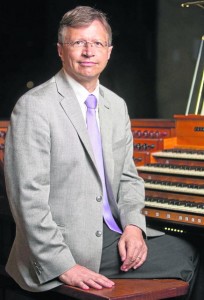As we near the end of this series on the movements of the French Classical Suite, we need to face the much revered and highly intimidating form of fugue. Before composers turned to serialism with twelve-tone rows in the twentieth century, I believe fugues represented the highest level of compositional craftsmanship. With the possibilities of stretto (overlapping statements of the subject) and diminution or augmentation, it is very easy to imagine a composer spending hours working out exactly how to combine the subject with itself in multiple ways to create a masterpiece. To be able to improvise a fugue on the with little preparation and no possibility of correction once the notes have been played makes this one of the most impressive forms to improvise.
Luckily for us, in the French Classical Suite the movements are too short to worry about or try to include many of these advanced techniques.
Exposition
At it’s most basic structure, a modern listener expects a fugue to begin with a single voice and each of the subsequent voices to enter one at a time in imitation of the original subject. The first statement provides the subject of the fugue, and the second entrance, typically in the dominant would be the answer. A real answer is a strict transposition of the subject. A tonal answer makes some modification of the subject in order to adjust for the unequal distances from tonic to dominant (perfect fifth) and dominant to tonic (perfect fourth). Most people find it is easier to improvise fugal expositions working from the lowest voice to the highest. French Classical fugues were almost always for manuals alone, so the lowest voice would be played by the left hand, enabling us to keep our improvising a little simpler by not using our feet for this movement.

Development
Given the shorter time expected for most verset movements, there is not time for extensive development and modulation to multiple key centers. Some movements in the French Classical repertoire with the title fugue consist of little more than an exposition with a conclusion shortly after all the voices have entered. For a slightly longer movement, try modulating towards closely related keys with new statements of the subject clearly stated when you arrive at the new key. It is useful and important to remember in a fugue that all of the voices do not need to continue during the entire piece. Especially for modulating sequences, it can be very helpful to reduce the texture to two parts for the transition with the third voice re-entering to mark the arrival at the new key center. The best fugues seem to always have a subject or material from the subject present in at least one of the voices at all times, so be sure to keep your development focused, and make it back to tonic for your conclusion.
Registraion
Reeds provided the most clarity on the French Classical organ and so were the basis for these highly contrapuntal pieces. The Classic registration for a fugue is to use the Trompette of the Grand Orgue perhaps with Bourdon and Prestant. An alternative would be to use the Cromorne (with Prestant or Flute 4′).
The highest level of fugue in the French Classical period was probably produced by Nicolas de Grigny. His fugues were for five voices on two manuals and pedal. The right hand played two voices on the Cornet while the left hand played two voices on the Cromorne. The fifth voice was played by the pedal on the Flute 8 or Grand Jeu de Tierce coupled from the Grand Orgue. Because there is at most an upper and lower voice in each of the tone colors, it becomes easier for the listener to follow individual voices. If you have mastered fugal exposition on one manual, try the registration used by Grigny. If you need some inspiration, listen to Christophe Mantoux play Grigny’s Fugue on Ave Maris Stella.
Hoping fugues inspire you rather than send you fleeing!
Glenn
Newsletter Issue 48 – 2015 09 15
See the complete list of past newsletter issues here.
Sign up to receive future issues using the box to the right on this page.


